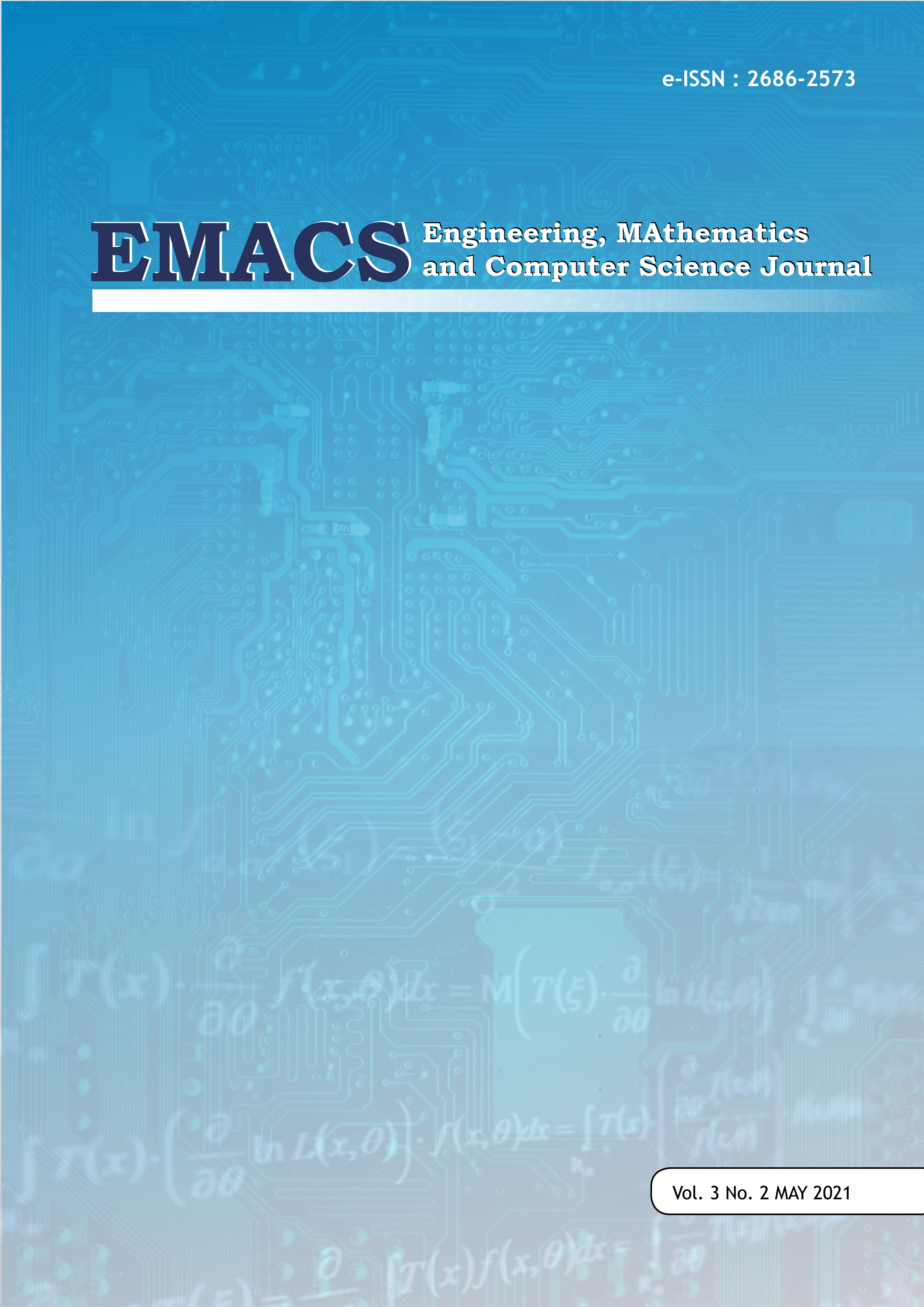Computer Vision for Supporting Visually Impaired People: A Systematic Review
DOI:
https://doi.org/10.21512/emacsjournal.v3i2.6923Keywords:
Visually Impaired People (VIP), Computer Vision (CV)Abstract
Globally around the world in 2010, the number of people of all ages visually impaired is estimated to be 285 million, of whom 39 million are blind according to the study of World Health Organization (Global Data on Visual Impairments, 2010). Visual impairment has a significant impact on individuals’ quality of life, including their ability to work and to develop personal relationships. Almost half (48 %) of the visually impaired feel “moderately†or “completely†cut off from people and things around them (Hakobyan, Lumsden, O’Sullivan, & Bartlett, 2013). We believe that technology has the potential to enhance individuals’ ability to participate fully in societal activities and to live independently. So, in this paper we focused to presents a comprehensive literature review about different algorithms of computer vision for supporting blind/vision impaired people, different devices used and the supported tasks. From the 13 eligible papers, we found positive effects of the use of computer vision for supporting visually impaired people. These effects included: the detection of obstacles, objects, door and text, traffic lights, sign detections and navigation. But the biggest challenge for developers now is to increase the speed of time and improve its accuracy, and we expect the future will have a complete package or solution where blind or vision impaired people will get all the solution together (i.e., map, indoor-outdoor navigation, object recognition, obstacle recognition, person recognition, human crowd behavior, crowd human counting, study/reading, entertainment etc.) in one software and in hand-held devices like android or any handy devices.
References
Afif, M., Ayachi, R., Pissaloux, E., Said, Y., & Atri, M. (2020). Indoor objects detection and recognition for an ICT mobility assistance of visually impaired people. Multimedia Tools and Applications, 79(41), 31645–31662.
Balasuriya, B., Lokuhettiarachchi, N., Ranasinghe, A., Shiwantha, K., & Jayawardena, C. (2017). Learning platform for visually impaired children through artificial intelligence and computer vision. 11th International Conference on Software, Knowledge, Information Management and Applications (SKIMA).
Dahiya, D., Issac, A., Dutta, M. K., ŘÃha, K., & KřÞ, P. (2018). Computer Vision Technique for Scene Captioning to Provide Assistance to Visually Impaired. 41st International Conference on Telecommunications and Signal Processing (TSP).
Duh, P.-J., Sung, Y.-C., Chiang, L.-Y. F., Chang, Y.-J., & Chen, K.-W. (2020). V-Eye: A Vision-based Navigation System for the Visually Impaired. IEEE Transactions on Multimedia.
Elmannai, W., & Elleithy, K. M. (2018). Computer Vision-Based Framework for Supporting the Mobility of the Visually Impaired. Bridgeport, CT: University of Bridgeport.
Global Data on Visual Impairments (2010). Geneva, Switzerland: World Health Organization.
Hakobyan, L., Lumsden, J., O’Sullivan, D., & Bartlett, H. (2013). Mobile assistive technologies for the visually impaired. Survey of Ophthalmology, 58(6), 513-528.
Jiang, H., Gonnot, T., Yi, W.-J., & Saniie, J. (2017). Computer vision and text recognition for assisting visually impaired people using Android smartphone. IEEE International Conference on Electro Information Technology (EIT).
Joshi, R. C., Yadav, S., Dutta, M. K., & Travieso-Gonzalez, C. (2020). Efficient Multi-Object Detection and Smart Navigation Using Artificial Intelligence for Visually Impaired People. Entropy, 22(9), 941.
Kitchenham, B. (2004). Procedures for performing systematic reviews. Keele, UK, Keele University, 33(2004), 1-26.
Li, X., Cui, H., Rizzo, J.-R., Wong, E., & Fang, Y. (2020). ross-Safe: A Computer Vision-Based Approach to Make All Intersection-Related Pedestrian Signals Accessible for the Visually Impaired. Advances in Intelligent Systems and Computing. Cham.
Mahmud, S., Sourave, R. H., Islam, M., Lin, X., & Kim, J.-H. (2020). A Vision based Voice Controlled Indoor Assistant Robot for Visually Impaired Peopl. IEEE International IOT, Electronics and Mechatronics Conference (IEMTRONICS).
Mocanu, B., Tapu, R., & Zaharia, T. (2017). Seeing Without Sight — An Automatic Cognition System Dedicated to Blind and Visually Impaired People. International Conference on Computer Vision Workshops (ICCVW).
Shapiro, L., & Stockman, G. (2001). Computer Vision. Prentice Hall.
Sivan, S., & Darsan, G. (2016). Computer Vision based Assistive Technology for Blind and Visually Impaired People. Proceedings of the 7th International Conference on Computing Communication and Networking Technologies. Dallas, TX, USA.
Talebi, M., & Vafaei, A. (2018). Vision-based entrance detection in outdoor scenes. Multimedia Tools and Applications, 77(20), 26219–26238.
Zientara, P., Lee, S., Smith, G., Brenner, R., Itti, L., Rosson, M., . . . Narayanan, V. (2017). Third Eye: A Shopping Assistant for the Visually Impaired. Computer, 50(2), 16-24.
Downloads
Published
How to Cite
Issue
Section
License
Copyright (c) 2021 Engineering, MAthematics and Computer Science (EMACS) Journal

This work is licensed under a Creative Commons Attribution-ShareAlike 4.0 International License.
Authors who publish with this journal agree to the following terms:
- Authors retain copyright and grant the journal right of first publication with the work simultaneously licensed under a Creative Commons Attribution License - Share Alike that allows others to share the work with an acknowledgment of the work's authorship and initial publication in this journal.
- Authors are able to enter into separate, additional contractual arrangements for the non-exclusive distribution of the journal's published version of the work (e.g., post it to an institutional repository or publish it in a book), with an acknowledgment of its initial publication in this journal.
- Authors are permitted and encouraged to post their work online (e.g., in institutional repositories or on their website) prior to and during the submission process, as it can lead to productive exchanges, as well as earlier and greater citation of published work.
USER RIGHTS
All articles published Open Access will be immediately and permanently free for everyone to read and download. We are continuously working with our author communities to select the best choice of license options, currently being defined for this journal as follows: Creative Commons Attribution-Share Alike (CC BY-SA)





